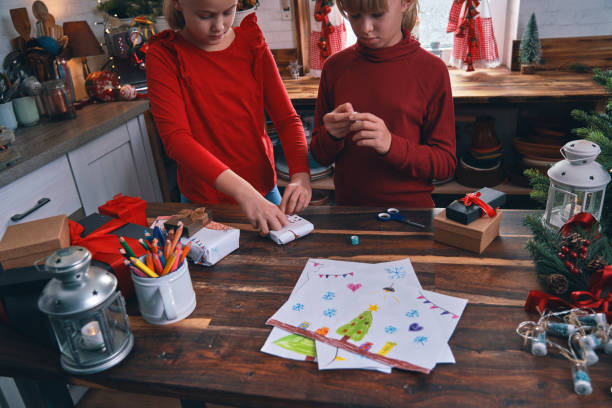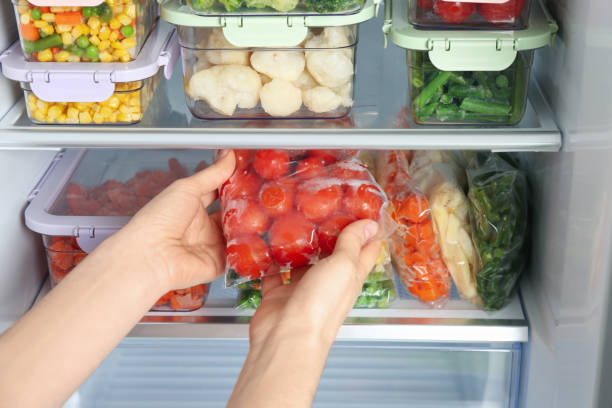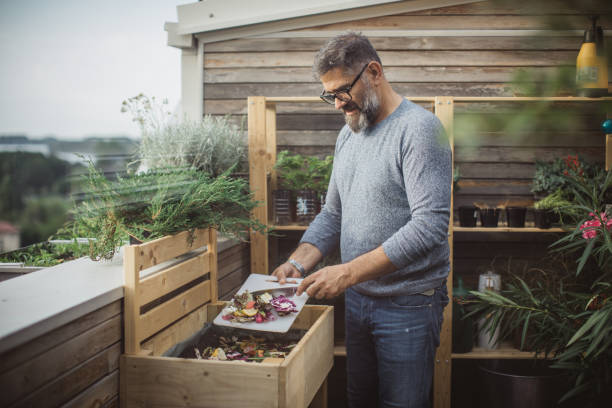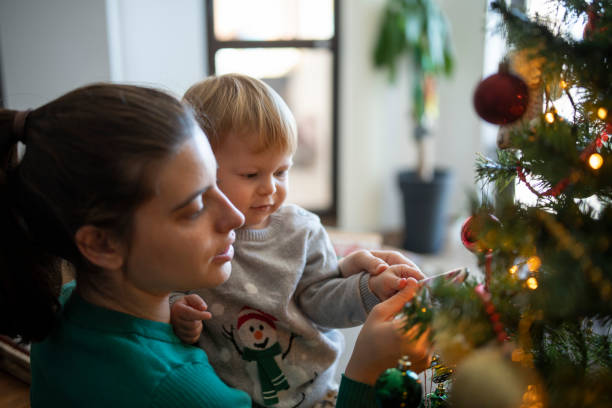As families and friends gather for the holidays, we share cards, gifts, and food. However, it can also lead to excess, stress and waste. This is why it is so important to make the right choices to have sustainable holidays. We can reduce our environmental impact while enjoying ourselves with our loved ones.
During the holiday season, you might wonder how you can reduce your carbon footprint while also enjoying all the traditions you love. Don’t worry! You can create memorable Christmas holiday experiences and reduce your environmental impact at the same time.
What are Sustainable Holidays?

Sustainable holidays focus on celebrations that don’t cause much harm to the environment. These green festivities prioritize eco-friendly decorations, sustainable gifting, zero-waste practices, eco-friendly travel, local stores, and informing others about sustainability.
It is easy to enjoy the holidays and ensure environmental sustainability if we embrace sustainable practices. You don’t need to spend lots of money or complicate your holiday plans to have an eco-friendly holiday. Just make a few modest changes and you are good to go!
10 Sustainable Holiday Ideas
Here are some ideas on how to have a sustainable holiday season.
1. Sustainable holiday wrapping

Are you aware that the U.S. produces about 4.6 million pounds of wrapping paper yearly and 50% of it ends up in dump sites across the country?
Your holiday tree might look gorgeous, but the waste stream may not. Printing companies use unsustainable inks to produce gift bags and wrapping papers, and they coat them with shiny foils. This reduces recyclability. Use your creativity when wrapping holiday gifts.
Wrap with things you already own, such as old shopping bags, comics, newspapers, and magazines. Using reusable wrapping material such as bandannas, scarves, or dish towels can also be an option. Add twine, pressed leaves, and pinecones to your bows to make them more festive.
2. Be energy-efficient

The holidays are a great time to decorate your house and enjoy the delights of the season. In addition, it also contributes significantly to the emissions of carbon dioxide and energy use.
A household will consume 65 kWh of electricity on average throughout December to light their holiday decorations. Holiday lights will consume 3.5 billion kWh of electricity in December across America, due to the amount of houses that will use them. It’s equal to the energy that 350,000 homes use every year.
Carbon dioxide emissions to the atmosphere will increase by 2 million tons according to these estimates. However, if we use LED holiday lights nationwide, we can reduce this number to 25%. Compared to traditional lights, LED lights consume about 85% less energy.
You can use a timer to keep your Christmas lights illuminated at specific times, thereby reducing energy consumption. To cut down on energy consumption, there are lights preprogrammed to twinkle and use specific bulbs at specific times, as well as laser decorations that use .005 watts per hour.
Related Reading: 12 Key Benefits of Renewable Energy Sources: Building a Sustainable Future
3. Choose sustainable holiday cards

My favorite tradition is making cards. As a child, I loved receiving physical cards, and I’ve kept a whole box of sentimental ones from my birthdays, graduations, and weddings over the years. Reading the words of my family and friends, particularly those who have passed away, is such a comfort.
Whether you make your card or buy it from a store, the heartwarming part is the personal message you include. Because 100% paper-based cards are renewable and recyclable, I always choose them. Put your creative juices to the test and make your own.
Draw, paint, or use markers to create cards for eco-friendly celebrations. Make it a family affair by giving your partner and/or children a card to fill out. They can address it to whomever they want and customize it however they like!
4. Buy sustainable Christmas gifts

Today, we have several options to choose from when it comes to zero-waste and sustainable gifts. Get your friends and family quality items that they can reuse for years to come this holiday season.
Buying locally crafted gifts from local businesses will help you have eco-friendly celebrations and reduce your holiday footprint.
Start with these ideas:
- Online classes in art, fitness, or dance.
- Give the outdoorsy person a pass to a state, county, or national park.
- Business or restaurant gift certificate.
- Subscription for personal care, refillable beauty, or cleaning supplies.
- Conditioner bars and shampoo, or homemade, unpackaged soap from a natural food store.
Read More: A Guide to Zero Waste Gifting: 7 Top Benefits
5. Opt for sustainable holiday decorations

Make unique, adorable Christmas decorations using items you already have around the house. This is also a fun way to keep kids busy during breaks from school, or even a reason to hold a craft party with family and friends!
Holiday decorations seem to be getting more extravagant every year! Reusing your decorations is one of the easiest things you can do. Avoid plastic décor (including glitter) as much as possible to have sustainable holidays.
You can even make your own this holiday season for some extra fun. To set the mood, you can use so many things around the house. Cones, ribbons, candles, painted branches, twigs, and pine sprigs are all good options. All of these decorations look beautiful.
Consider using a large house plant, or rosemary bush, or making one yourself if you do not want to chop down a tree. Here are some upcycling ideas to get you started.
6. Sustainable holiday shopping

It is better to begin Christmas shopping early! Your sustainability goals will be harder to achieve if you wait until the very last minute.
By shopping early from zero-waste stores, you can learn more about the products you’re purchasing and the company from which you’re purchasing them. Spend wisely and support what you believe in since changing buying habits force companies to change.
Local shopping is also a good idea. If you agree with the principles of a small business in your community, support them. Reduce your carbon footprint by avoiding extensive shipping.
The most important thing is to minimize your shopping as much as possible! The holiday season seems to be engulfing us. Don’t let it sweep you away! Family time is what green festivities are all about! This busy shopping season is the perfect time to keep that in mind.
7. Pick the right Christmas tree

Are you aware that fake plastic trees cause more harm to the environment than real trees?
Every real Christmas tree comes from a farm. The U.S. Christmas tree farms grow 350 million trees, so you don’t need to cut one down in the forest.
A farmer will typically plant three seedlings every time a user picks a tree since Christmas trees grow like crops. Additionally, you can turn it into compost or mulch when Christmas is over.
Cities and towns with large populations offer curbside recycling pick-up services as well as recycling drop-off centers. You could also rent a live tree with its roots intact in a pot for the holiday season.
When the holiday season ends, the trees will get back to their forest nursery and keep on producing oxygen for the environment.
To prevent waste, continue using your fake plastic tree if you already have one. Recycling plastic trees with curbside recycling is not possible. Consider replacing it with a real tree when it’s time for it to retire.
8. Don’t eat out

Eating out is not sustainable, no matter what restaurant you choose. Waste and human rights violations exist in the food and hospitality sectors! Avoid visiting these places (particularly fast food restaurants) to have green festivities.
Plan your holiday meals carefully when cooking at home! When choosing ingredients, look for local, seasonal options and make sure you have the right amount on hand. It is common for people to overbuy and overprepare holiday meals. It can lead to food waste!
9. Reduce food waste

During the holiday season (Thanksgiving, Christmas, and New Year’s), Americans waste between 30 and 40% of their food supply.
Give guests some leftovers to take home or share with family and friends if you don’t want to eat leftovers all week. It is often possible to freeze leftover soups or stews for six months or longer! This is the perfect low-waste, eco-friendly holiday recipe!
Here are some ideas for reducing food waste and having sustainable holidays:
- Provide some paper-to-go containers so guests may take leftovers home with them.
- Don’t throw away leftovers! Eat them! You can use them in several creative ways.
- If you have food or cooking scraps, compost them.
- Be sure not to overcook: Make enough for your guests. Preparing meals in advance and planning can help.
- If your guests express strong distaste for certain foods, try not to prepare them.
- Keep dietary restrictions in mind! Before you cook, discuss everyone’s diet with them.
Read More: The Environmental Impact of Food Waste and How to Combat It
10. Compost food scraps

In landfills, food waste releases methane gas, which contributes to climate change due to its harmful greenhouse gas properties. Hence, composting food wastes and letting them decompose effectively benefits our soils and gardens, as well as reducing harmful greenhouse gas emissions.
To learn more about composting, read our beginner’s guide on composting and find out sustainable ways you can turn food scraps into nutrient-rich soil.
Conclusion
As the holiday season approaches, it is a time when friends and family spend more time together, cooking, exchanging gifts, and traveling to visit family and friends. Our cities, ourselves, and our planet can all benefit from sustainable holiday celebrations.
We can make next year better for everyone if we work together this holiday season! Embrace zero-waste living today!







